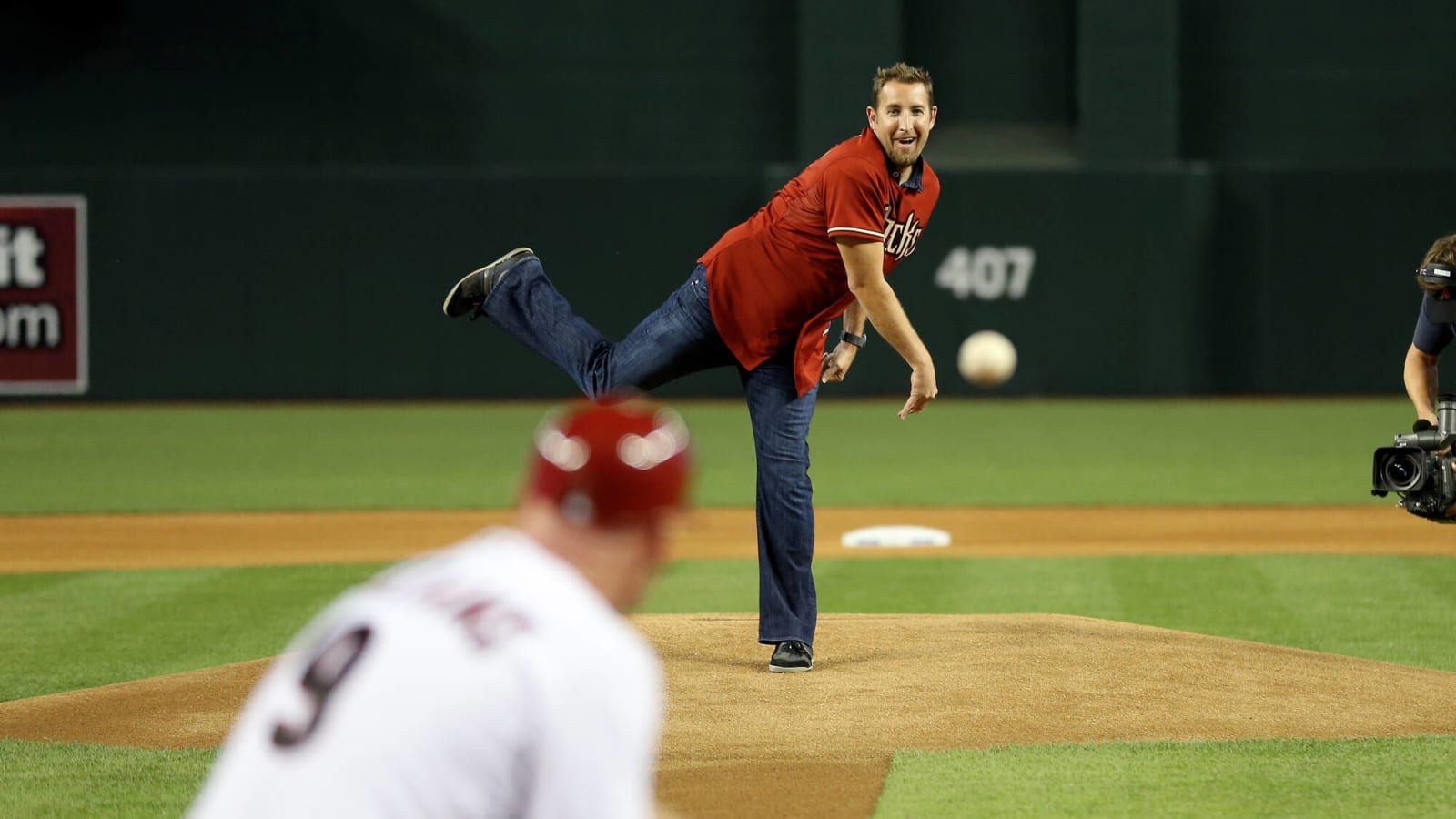
A sinker is not as sexy as a good curveball or a knee-buckling slider. Heck, it’s nowhere near as attractive as a fading changeup. You could make an argument that sinkerballers are perhaps the most boring kind of pitchers because sinkers don’t usually generate too many swings and misses.
However, a good sinkerballer is a manager’s dream. The really, really good ones are economical with their pitches, efficient, and effective. Arizona Diamondbacks’ Brandon Webb was an exceptional one, perhaps the most underrated of the last 20 years.
He was the symbol of the D-Backs’ post-2001 World Series rotation, first as a number two behind Randy Johnson in 2004 and then as the staff ace.
Webb, however, is not a Hall of Famer. Not even close, actually. But if you watched baseball in the 2000s, you surely know he was a true worm-killer, as dominant in his craft as anyone.
He comfortably qualifies for the unofficial, symbolic Hall of Very Good Players, because that’s what he was.
Just for fun, let’s examine the 2006 NL Cy Young winner’s Hall of Fame case.
Career total stats
This is Webb’s biggest weakness when it comes to building a Hall of Fame case. Shoulder injuries and surgeries forced him to retire in 2013, a couple of months before his 34th birthday. The really shocking thing is that the last pitch he threw in MLB came in 2009.
Obviously, having made starts in just six MLB seasons (he made one in 2009 but that doesn’t really count), his total stats are well short of one would expect for HOF consideration.
He retired with an 87-62 record, 1,065 strikeouts and 1,319.2 innings. I like to think that if Webb had better luck with his shoulder late in his career, he could have put together a serious Cooperstown-worthy resume.
His 29.6 fWAR would rank near the bottom of the HOF rankings.
Career rate stats
Webb’s rate states are, indeed, impressive. His 3.27 ERA career ERA is better than many Hall of Famers, and he still has the 18th best ERA+ in the history of the game at 142.
ERA+ is a really useful tool to compare pitchers of different eras before it takes a player's ERA and normalizes it across the entire league, accounting for external factors like ballparks and opponents.
His 1.24 WHIP was good, but nothing special. His 63.4 percent groundball rate, however, is historically good. His sinker, a pitch he threw over 70 percent of the time, helped him induce a lot of grounders, which is the best and most convenient kind of batted ball pitchers can allow.
Peak performance
Due to the fact his shoulder basically prevented him from pitching in his 30s, you can say Webb’s prime or peak performance was his entire career.
His 29.6 career fWAR was actually 29.8 if we take away the four frames he logged in 2009, in just one start. Excluding that season, he averaged 4.97 fWAR per year. A very strong number.
In his prime, Webb was a true workhorse who pitched 220 or more innings in four consecutive years from 2005 to 2008. He never had an ERA higher than 3.59 in a full season.
Between 2006 and 2008, Webb won a Cy Young and finished second twice: to Jake Peavy in 2007 and to Tim Lincecum in 2008. That three-year stint was some of the best work of his career.
Longevity
As stated, this is where everything goes south in Webb’s Cooperstown case. To build a really good Hall of Fame resume, players need to stay in the majors for at least 15 years, give or take and depending on each individual case (Sandy Koufax needed just 12 campaigns to get the honor).
However, Webb’s six full seasons are clearly not enough. His time in the bigs was impressive, but short. He didn’t even hit the minimum ten-season threshold for consideration.
Individual accolades
Webb has something that many Hall of Fame pitchers don’t have: a Cy Young award. He won it in 2006 with a 3.10 ERA in 235 innings.
A Cy Young means that the pitcher was the best of the best at least for a season. Guys like Juan Marichal, Nolan Ryan, Mike Mussina, and Bert Blyleven are all in the Hall and didn’t win a Cy Young.
Webb also made three All-Star teams and led the National League in wins in 2006 and 2008.
There is not much else to talk about regarding individual accolades, but that Cy Young and the two second-place finishes he had are very, very cool achievements.
Character
Webb wasn’t involved in any known controversies. He even started, in 2005, the Brandon Webb's K Foundation, a charity that tries to “improve the lives of critically and chronically ill children throughout Arizona.”
Closing thoughts
Webb was a better pitcher than several Hall of Famers. However, that doesn’t mean he had a HOF-worthy career. He only pitched six full seasons, and no player will make it to Cooperstown with such an insufficient body of work.
He was, however, very good, which is kind of the point of this exercise. His career, short as it was, should be celebrated. Too bad his shoulder took him out of the highest level at such a young age.
More must-reads:
- Watch: Shohei Ohtani homers twice as Dodgers sweep Braves
- Pirates GM responds to calls to promote ace pitching prospect
- The 'MLB Rookies of the Year' quiz
Breaking News
Customize Your Newsletter
 +
+
Get the latest news and rumors, customized to your favorite sports and teams. Emailed daily. Always free!

